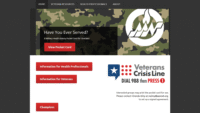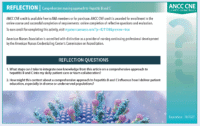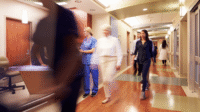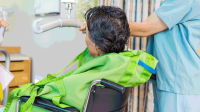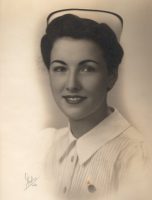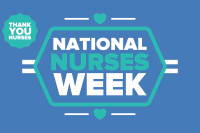Staying emotionally healthy is important to personal and patient safety.
Takeaways:
- Burnout affects more than half of nurses, physicians, and other healthcare providers.
- To reduce risks of burnout, the National Academy of Medicine launched the Action Collaborative on Clinician Well-Being and Resilience.
- Clinician health requires breaking down the stigma associated with seeking mental healthcare.
EVERY DAY, we’re faced with examples of our stressed healthcare system—in social media, in articles, and in TV headlines. As this system strains to deliver better care, lower costs, and improved outcomes, many healthcare professionals’ lives have suffered.
Findings from the National Academy of Medicine (NAM*) Action Collaborative on Clinician Well-Being and Resilience provide a wealth of evidence that, in NAM’s words, “Healthy clinicians provide better patient care.” But many clinicians and healthcare workers are exhausted and overwhelmed. Nurses, physicians, dentists, pharmacists, and others experience disturbing rates of burnout, creating an unsustainable burden on all healthcare organizations and endangering care delivery. Some of the coalition’s facts are alarming:
- 43% of inpatient nurses have a high degree of emotional exhaustion.
- Burnout is nearly twice as prevalent among U.S. physicians as among workers in other fields.
- Medical trainees experience higher rates of depression and burnout than individuals of similar ages pursuing different careers.
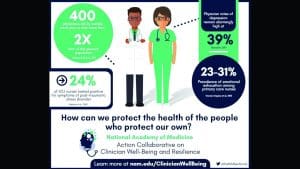

Mean stress levels for hospital employees have been shown to correlate with hospital malpractice suits and mean burnout levels for hospital nurses are an independent predictor of healthcare-associated infection. Other studies have found that as intensive care unit physician and nurse emotional exhaustion levels rise, patient mortality increases and interprofessional teamwork decreases. These results are a cause for real concern.
Research confirms that burnout leads to increased numbers of medical errors, decreased patient satisfaction, increased turnover, reduced productivity, and higher healthcare costs. However, few effective interventions exist. For years, the American Nurses Association (ANA) has stepped up by providing practical strategies—such as Healthy Nurse, Healthy NationTM, #EndNurseAbuse, and the “You Series,” which confronts issues such as workplace bullying and moral distress—to address these problems.
With so many resources at our fingertips, why do we have trouble adopting them? As with many problems, the answers lie in a complex mix of factors, including workload, work environment, human system interactions, teamwork, technology, and policies and regulations. Personal factors also are at play and are a good place to start.
Here are a few tips to help you become a more knowledgeable and less stressed nurse:
- Understand that stress is contagious, but so is wellness. Don’t become a victim of secondhand stress from others.
- Know how you respond to stress and be clear about your stress tendencies. Do you try to avoid stress and procrastinate, or do you internalize it and blame yourself?
- Be self-aware. Recognize your stressors and take breaks from them to reduce energy drain.
- Ask for help and build supportive relationships with experts and mentors. Healthcare is a team sport. You’re not alone.


Lillee Gelinas, MSN, RN, CPPS, FAAN Editor-in-Chief
lgelinas@healthcommedia.com
Selected references
National Academy of Medicine. Systems approaches to improve patient care by supporting clinician well-being. nam.edu/systems-approaches-to-improve-patient-care-by-supporting-clinician-well-being/
Cimiotti JP, Aiken LH, Sloane DM, Wu ES. Nurse staffing, burnout, and health care-associated infection. Am J Infect Control. 2012;40(6):486-90.
Welp A, Meier LL, Manser, T. Emotional exhaustion and workload predict clinician-rated and objective patient safety. Front Psychol. 2015;5:1573.
Welp A, Meier LL, Manser T. The interplay between teamwork, clinicians’ emotional exhaustion, and clinician-rated patient safety: A longitudinal study. Crit Care. 2016;20(1):110.




